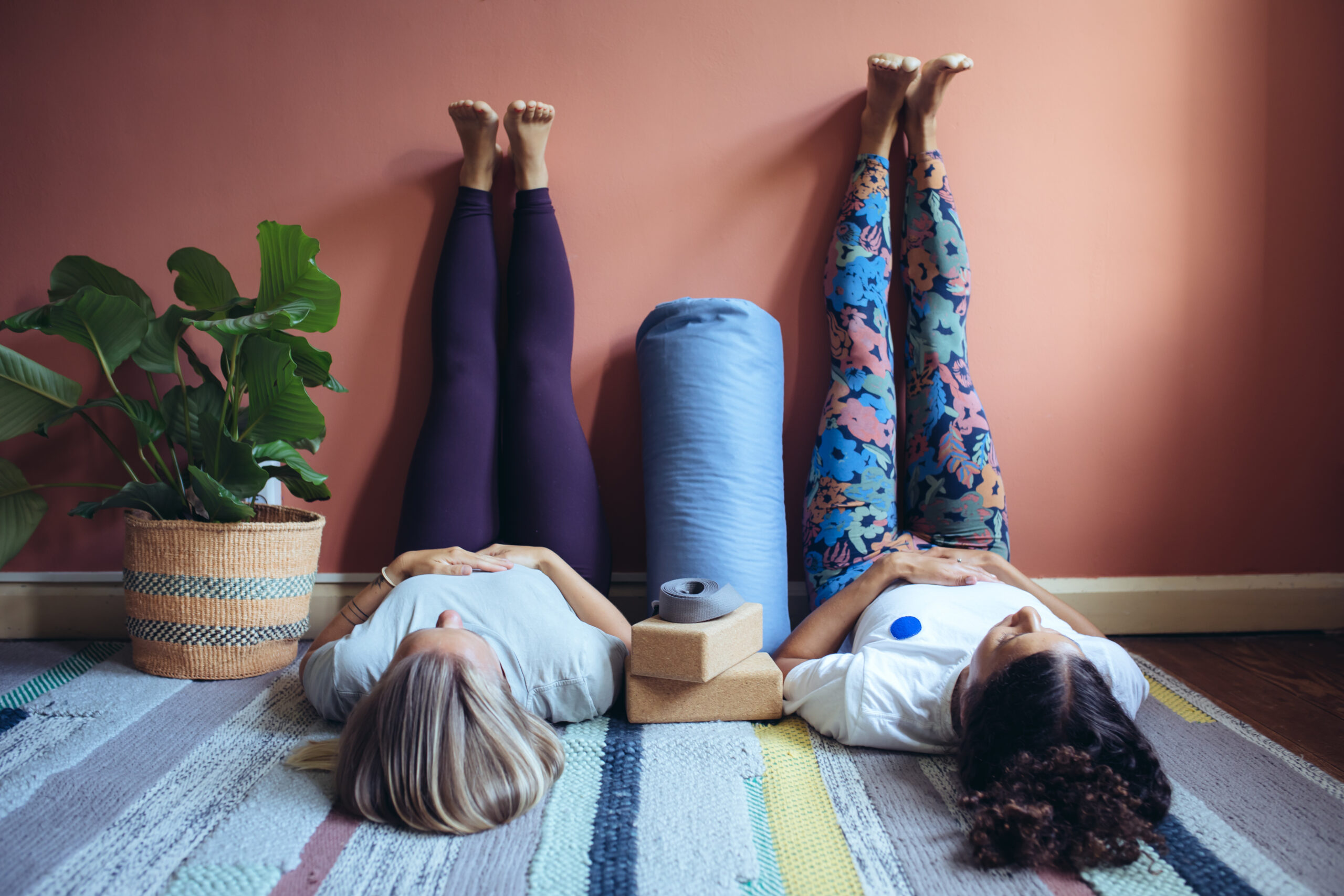You know exercise is good for your body, but somehow you do not feel motivated enough to put on your sports shoes and go out? Is there any exericise that you can do indoors but still helps improve your IBS. Luckily there is one. For this exercise it helps improve your blood circulation, relax your mind, and ease your headaches. It is a laid-back but still effective yoga exercise: legs on the wall, a method advocated by two yoga teachers: Brooke Blocker and Courtney Sullivan.
Legs up the wall: Why
For IBS people like you and me, the biggest benefit of legs up the wall is improving digestion. When holding your legs on the wall (with deep breathes) you have activited your ‘aeroplane’ mode, a mode in which you are allowed to take a rest (according to Ashley Neese, author of Permisssion to Rest). Why? As you put your legs up the wall and breath slowly, you have done something special that you send a message to your brain, saying that you are now in a calm state. And in this calm state, your digestion works best as it works faster, and your pancreas make and release insulin, making sugars easier to be broken down.
Putting your legs up the wall also fights against one of your depressing enemies: tension-related headaches. They are enemies as medicines for them may cause you to suffer more (e.g. weight gain and liver damage.) Worst of all, it is those medicines that may also cause depression, a disease often goes hand in hand with IBS. However, according to a team of scholars, yoga has huge effects on headaches that are tension-related in three aspects: how often (frequency), how long (duration), and how hard (pain intensity). Put simply, putting your legs up the wall allows you to go into an aeroplan mode, a calm state, which helps ease your tension, a factor triggering your headaches.
A futher benefit of legs up the wall has to do with edema in the legs and feet, and particularly beneficial if you have low blood pressure (Brooke Blocker). About edma (swelling caused by excess fluid accumulation in your body), by counteracting gravity, the pose allows fluid to drain away from the legs and feet, reducing swelling and discomfort.
Moreover, this counteracting also helps veins carry deoxygenated blood back to your heart, improving low blood pressure. Well, what (on earth) is deoxygenated blood? Before talking about it, let’s have a big picture on how blood goes in your body. To nourish your organs and tissues, blood delivers oxygen, water, and nutrients to every part of your body. After such a delivery your blood will take some ‘garbage’ in return, and blood that receives carbon dioxide is deoxygenated blood. In a word, when you put your legs up the wall, this counteracting gravity makes deoxygenated blood from, for instance, your toes back to your heart, a process in which adequate circulation is maintained and in which blood pressure is raised.
Legs up the wall: How
Putting your legs up the wall is not a casual process, you have to follow the steps suggested by Brooke Blocker (as this is actually the yoga pose, Viparita Karani):
- Cozy setup:
Find a comfortable spot near a wall. Lying in bed with your legs up the headboard works well.
Get your hips as close to the wall as possible. - Leg position:
Walk your feet up the wall until your body forms an L shape.
Adjust as needed for comfort. You can place a pillow under your head or let your arms rest on your belly or out to the sides. - Breathing focus:
Pay attention to your breath. Take slow, deep inhales through your nose and exhale slowly through your nose.
Legs up the wall: Don’t
However, not every IBS person should put legs up the wall. What follows are words of cautions from two yoga teachers, Brooke Blocker and Courtney Sullivan: Don’t do it
- if you have medical conditions such as hernia, hypertension, or glaucoma.
- if you have any concerns with blood coming to the head.



